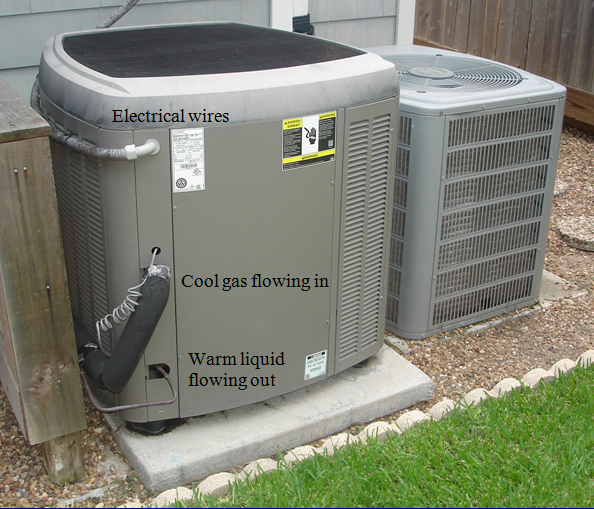Air Conditioning
by Andrew Boyd
Today, we cool it. The University of Houston's College of Engineering presents this series about the machines that make our civilization run, and the people whose ingenuity created them.
Humankind has known how to heat things for a long time; simply start a fire. But when did we learn to cool things? When did we invent air conditioning?
We've actually been aware of the basic process behind air conditioning for longer than we've known how to make fire. We feel cooler in a breeze than in still air. That's because the breeze causes the perspiration on our bodies to evaporate more quickly. The evaporated water — more energetic than liquid water — takes heat with it. The remaining perspiration is cooler and in turn cools our bodies.
Air conditioners work on the same principle. An early reference to cooling by evaporation can be found in the letters of Benjamin Franklin. Franklin experimented by dipping a thermometer into distilled spirits. He noticed when he removed the thermometer, its temperature dropped; a drop he correctly attributed to the evaporation of the alcohol. Franklin repeated the experiment with chemistry professor John Hadley at Cambridge University, using ether instead of spirits, a bellows for blowing air, and a feather for continually reapplying the ether. Together, they reduced the temperature of the thermometer to twenty-five degrees below freezing.
In modern air conditioning systems, cooling takes place in the evaporator coil, located inside the building being cooled. Here liquid coolant is evaporated, cooling the air around it. The coolant, now an energetic gas, is piped outside.
In the human body, we replenish our liquid coolant by drinking more water. But air conditioners reuse their coolant. So the energetic gas needs to be turned back into a liquid for the process to repeat itself.
That process takes place outdoors with a neat little trick. All other things being equal, we can turn the gas into a liquid by compressing it. Unfortunately, all other things aren't equal. Compressing the gas also raises its temperature, and it won't condense into a liquid unless we cool it off. But here's the trick. The compressed gas is hotter than the hot air outside. So it naturally loses its heat to the atmosphere and we're left with a liquid.
There are some surprising consequences. The liquid coolant flowing into the house is at least as warm as the air outside. It's the indoor process of evaporation that creates the cool. And the energetic gas that flows out of the house? It's actually quite cool — typically around fifty degrees. Warm liquid goes in, cool gas comes out.

Of course, new air conditioning technologies are constantly being researched and commercialized — technologies that use less energy, cost less, and are safer for the environment. It just goes to show that engineering really can be cool.
I'm Andy Boyd at the University of Houston, where we're interested in the way inventive minds work.
Notes and references:
For a related episode, see WILLIS CARRIER.
How Refrigeration Works. From the Website: http://www.wisdompage.com/SEUhtmDOCS/3SE5.htm. Accessed June 23, 2011.
W. Whitman, W. Johnson, and J. Tomczyk. Refrigeration and Air Conditioning Technology. Clifton Park New York: Thomson Delmar Learning, 2005.
Special Thanks to Ken Taylor of AirDepot Air Conditioning and Heating in Houston, Texas, for help in preparing this episode.
Picture by E. A. Boyd.
This episode was first aired on August 25th, 2011